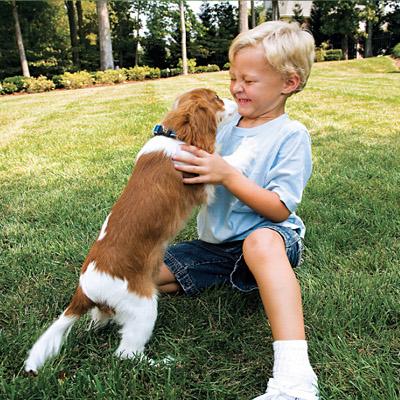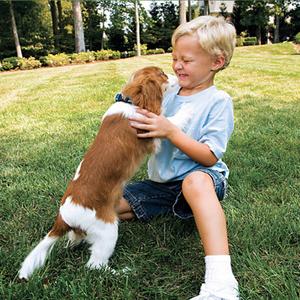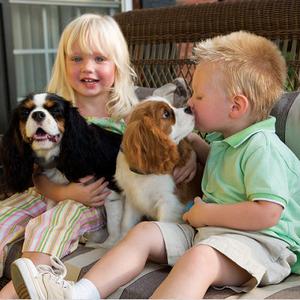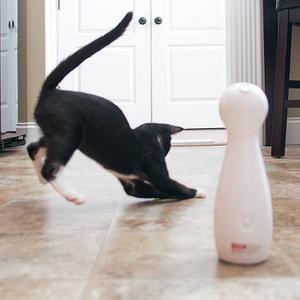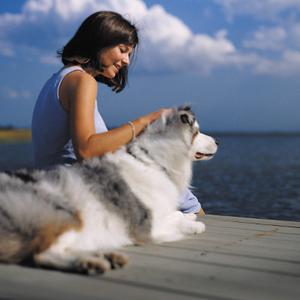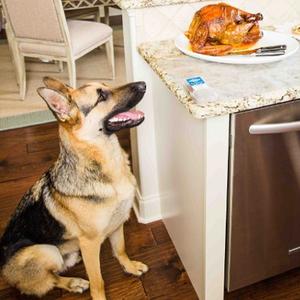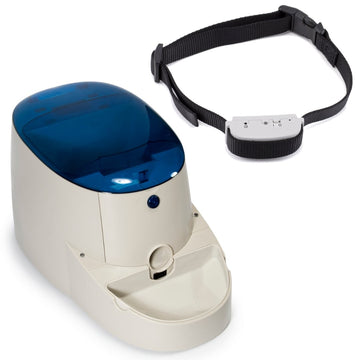 Take care of the kids, make dinner, keep the house clean, pay the bills, and train my dog?! Where should I get all this time?!
Take care of the kids, make dinner, keep the house clean, pay the bills, and train my dog?! Where should I get all this time?!
I was a full-time dog enthusiast until about 2 years ago. I spent all of my spare time with my dogs. We trained every day, we participated in doggy sports and they rode shot-gun to pretty much everywhere I went.
Then I had my first child. A lot of things changed. My children are young and need 100% of my attention. I realized that I wasn't spending a lot of time with my dogs anymore and it started to show. They started barking more, stole food, wouldn't come inside when I called them, and just weren't listening like they used to. As a dog trainer, I knew why it happened--they were lacking the mental and physical enrichment they needed. They were releasing their pent-up energy into behaviors that I found incredibly frustrating.
I was once a (childless) dog trainer that didn't completely understand how families found it difficult to squeeze in time and training for their pets. Now, as I chase a toddler and carry a newborn, I can understand how our pets can sometimes fall further down on the priority list, even if it isn't fair to them. The good news? There ARE ways to create an enriching environment, work on behavior problems AND provide the life your dog deserves--even with sticky peanut butter hands chasing you while you trip over trucks, dolls and plastic figurines. And they're easy.
Enrichment Is Important for Dogs
First, let's focus on enrichment. Your dog needs a life that has some excitement. If you don't create something exciting or provide some variety, a dog might create his own exhilarating experiences. This might be obsessively staring out the window and barking at everything that passes or pulling on a leash to find the next scent. Lack of enrichment often creates behavior problems.
How can you provide some enrichment without requiring the 25th hour of the day?
Start with their meal. Feed it out of an enrichment toy like the Kibble Nibble. This requires your dog to work for it. Once your dog gets the hang of it, get rid of his bowl permanently. There is no reason to give your dog a boring bowl for his food when you can just as easily provide it in a mentally stimulating toy that will keep him engaged instead.
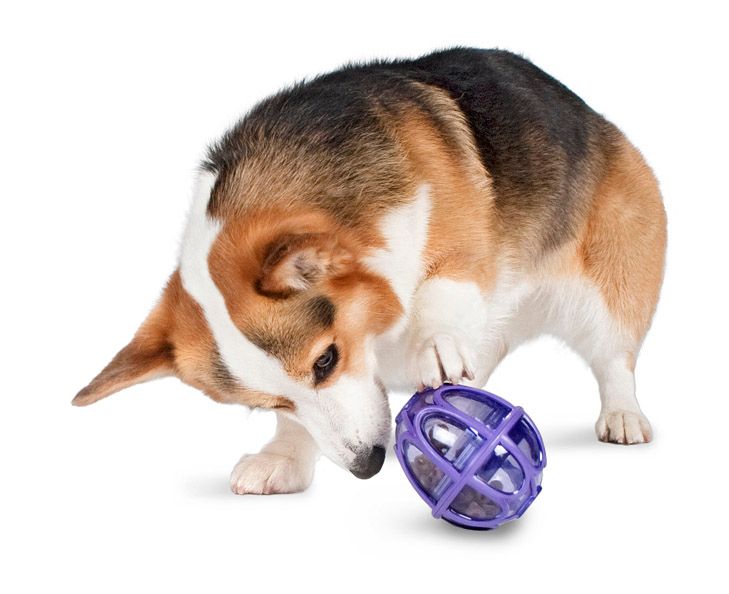
Take your dog on walks. While this does take extra time, you can bring your kids and simultaneously wear them out. There is nothing better than tired kiddos and pups lounging quietly when you get home! If you find that your dog is making it unenjoyable by pulling you down the road, try a no-pull harness like the Easy Walk® Harness or Gentle Leader® Headcollar.

Make your outdoor time interesting. Just like being cooped up indoors, seeing the same outdoor environment over and over isn't exciting. If you can take walks with your dog, take different routes. If you have a fenced in yard, change up the experience. Add unique or different toys to the yard. Provide a sandbox that your dog can dig in. (Hint: An inexpensive plastic pool works great for sand!)
Spray scents in different places, like lavender, vanilla, or if you're really feeling exciting, you can purchase other animal scents. A new smell will not only keep your pup engaged for a while, it's also a thrill.
Swap out toys. Speaking of variety, keep the indoor toys in a rotation. If your dog has access to all of his toys all the time, they can get boring. Give your dog only a few and rotate them out with others every week or so. This constant novelty is sure to make him excited!
Adding enrichment to his environment doesn't need to be hard or overly time-consuming. Sometimes it just takes little tweaks to his environment that can change the monotony and make life exciting!
Training Helps Control Behavior
If your dog is exhibiting behavior problems that require more than making his environment exciting, you might be feeling frustrated and wonder how (and when!) to fix them. If you're juggling kiddos, the time and commitment required can be daunting.
There are two major things you can do to address behavior problems: Manage them or train them.
Manage Situations to Prevent Bad Behavior
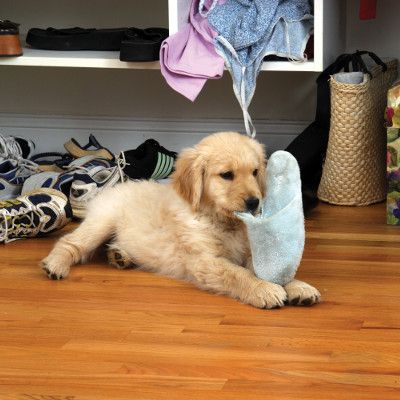 Sometimes your dog can perform undesirable behaviors merely because he has the access to do them. These are relatively easy to fix by managing the environment. Think to yourself: What can I change in the environment that would prevent this from happening?
Sometimes your dog can perform undesirable behaviors merely because he has the access to do them. These are relatively easy to fix by managing the environment. Think to yourself: What can I change in the environment that would prevent this from happening?
For example, a dog with unlimited access to windows in the front of the house might learn to bark at people and animals passing by. A baby gate to prevent access to that room will likely solve this problem. A dog chewing up shoes or toys in the house while you are away from home can easily be fixed by crating the dog, limiting the dog's access to the room where those items are or by ensuring that those items are put away before leaving the dog. A dog who lingers during dinner time for dropped food or, even worse, snags food from little kids can be fixed by preventing his access to the kitchen during mealtime or area where food is served. Baby and pet gates are a trainer's best friend!
The goal isn't to limit your dog's interactions or acceptable locations. The reality of the situation is that when the dog has access and performs undesirable behaviors, they are often accidently reinforced. For example, the stranger outside does walk away after the barking, the inappropriate chewing feels good, and the dog catches those dropped cheerios. When they are accidently reinforced, they are more likely to continue happening. When we limit his "accidental reinforcement" to inappropriate behaviors by limiting his ability to perform those behaviors at all, we are reducing the likelihood that they will continue in the future.
How can you manage your environment so that your dog isn't able to perform the behaviors you don't like? Make sure you consider the enrichment piece while you're changing the environment as well. Especially if you are limiting interactions or locations, how can you continue to make his living environment exciting?
Start Training to Stop Bad Behavior
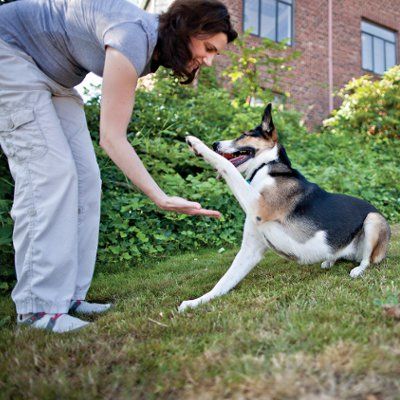 Sometimes management isn't enough. There are many behavior problems that absolutely cannot continue happening, or you aren't able to manipulate the environment to change them. This is when you need to start training. Training does require more commitment and time but can have the best outcome in the long-term. Developing a training plan utilizing positive reinforcement will ensure that your dog not only performs good behaviors because he has to, but because he wants to as well.
Sometimes management isn't enough. There are many behavior problems that absolutely cannot continue happening, or you aren't able to manipulate the environment to change them. This is when you need to start training. Training does require more commitment and time but can have the best outcome in the long-term. Developing a training plan utilizing positive reinforcement will ensure that your dog not only performs good behaviors because he has to, but because he wants to as well.
It is important to note here that using aversive training is less likely to provide you long-term results. If you yell at, hit, or provide any other aversive consequence to your dog, he can become fearful. He might learn to stop performing certain behaviors, but it isn't because he wanted to and he hasn't learned to do anything instead (which means he might start to guess what else he should do... not always ideal!)
The first thing you should do is consider what you want your dog to do. When behavior problems arise, we often quickly create a list of all the things we don't want. (I want him to stop jumping on my kids. I want him to stop taking food from my kid's hand. I want him to stop chewing up the kid toys). In training, you should focus on training the behaviors that you want instead. For example,"I want him to stop jumping on my kids" should translate to "I want him to sit politely when my kids walk in the door." "I want him to stop taking food from my kid's hand" should translate to "I want him to accept his treats and food in a certain location after I ask him to lie down." "I want him to stop chewing up the kid toys" should translate to "I want him to chew his toys on his bed." Now we're getting somewhere! Then you focus on training those things.
Sounds simple, right? We all know that giving a dog a treat after he does something means he'll likely do that thing again. However, when you're juggling kid's dinners, homework, catching up with your spouse and keeping the house tidy, it isn't always easy to break out a treat pouch and sit for a 15-minute training session. Good news--it's still possible!
Stop accidentally rewarding undesirable behaviors.
Think to yourself--what is motivating my dog to continue this behavior? Now cut out that reinforcement.
Get everyone on board (and I mean EVERYONE).
Husbands, wives, kids, grandparents, and any other visitors. Tell them what you're training. People need to know that you're working on something with your dog so that they don't provide any accidental reinforcement. One person petting your dog like crazy when he jumps up on them can easily ruin any training plans you had for teaching your dog to sit politely when you walk in the door.
 Put treats everywhere.
Put treats everywhere.
Make it easy to quickly reward your dog for good behavior without making it an entire training session.
Keep a big bowl of them by the door so that you can ask your dog to Sit right away as you enter and provide a treat. Put them in the kitchen so you can toss them into the next room if your dog is politely sitting in there instead of lurking under the dinner table. Have a bowl somewhere near his bed so you can easily toss a few in there to show him that this is where the good stuff happens. Reward frequently for good behavior. Soon enough you'll start to see those problem behaviors disappear as the new trained good behaviors take over.
If you're able to snag some time, try to get a short training session in. Involve your kids if you can. While your kids shouldn't necessarily touch the dogs or treats during the training session, they are usually plenty entertained by watching the dog do new things! As always, if you're dealing with a behavior problem that is severely interrupting the harmony in the home or poses a danger to you, your family or other pets, enlist the help of a trainer and plan to begin a more structured behavior modification program.
We all know that we consider our pets as part of our family. Sometimes things can get so hectic that we aren't able to give our pets as much time as we'd like or behavior problems can sneak up on us. The good news is that training and enrichment don't have to be a huge undertaking. With a few little tweaks in our daily lives, we can make a huge impact for our pets!

